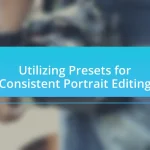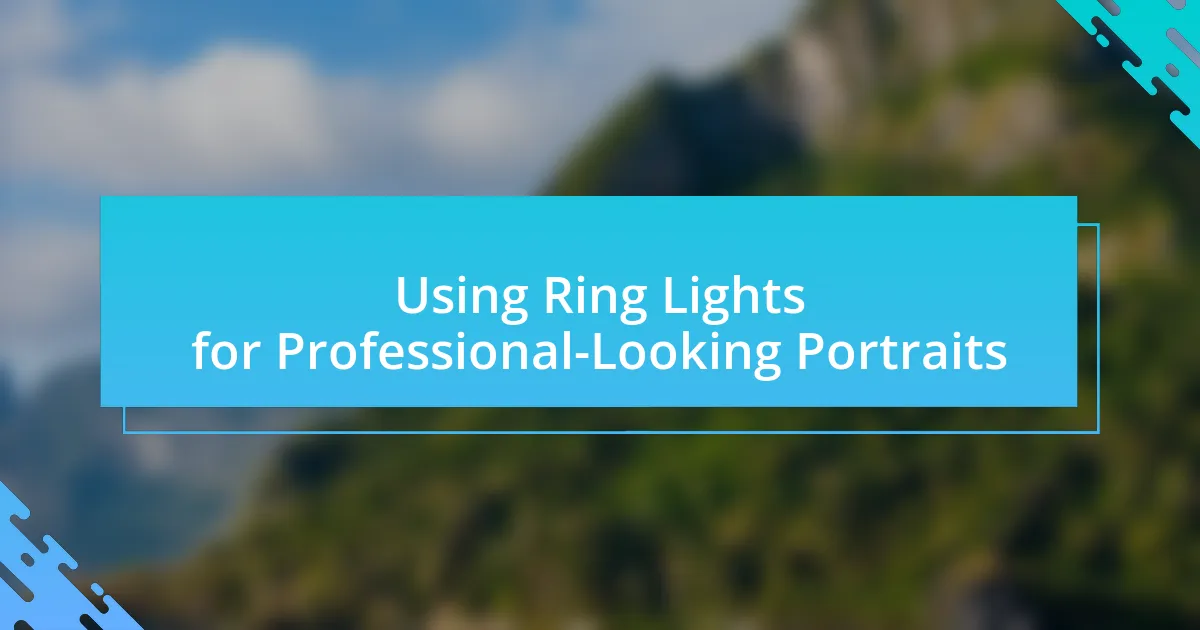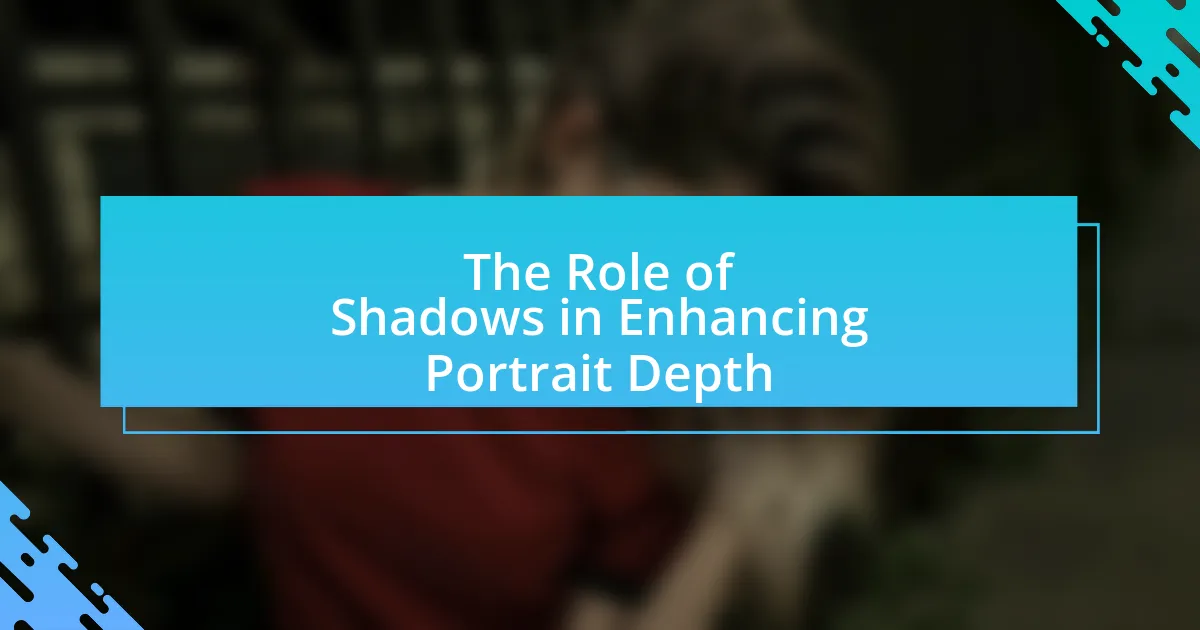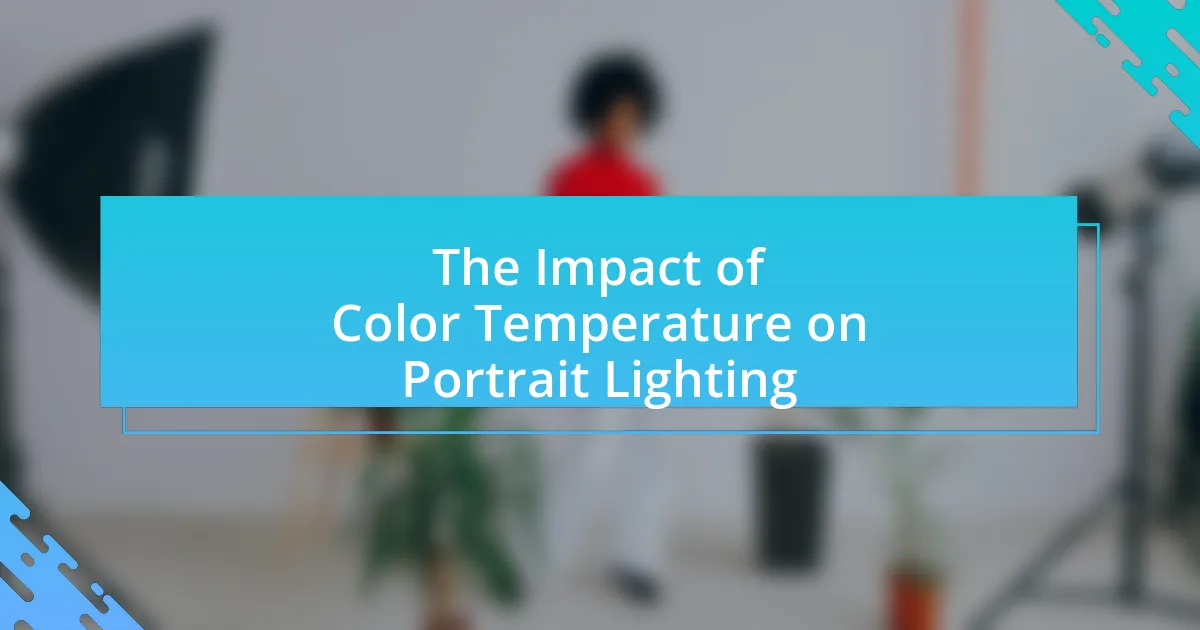The article focuses on essential tips for effectively using flash in outdoor portrait sessions. It emphasizes the importance of off-camera flash positioning to create dynamic lighting and reduce harsh shadows, enhancing the subject’s features. Key techniques discussed include balancing flash power with ambient light, utilizing diffusers for softer illumination, and employing various flash equipment such as speedlights and monolights. Additionally, the article addresses common challenges faced when using flash outdoors, such as overexposure and harsh shadows, while providing best practices for achieving consistent and flattering results in outdoor portrait photography.
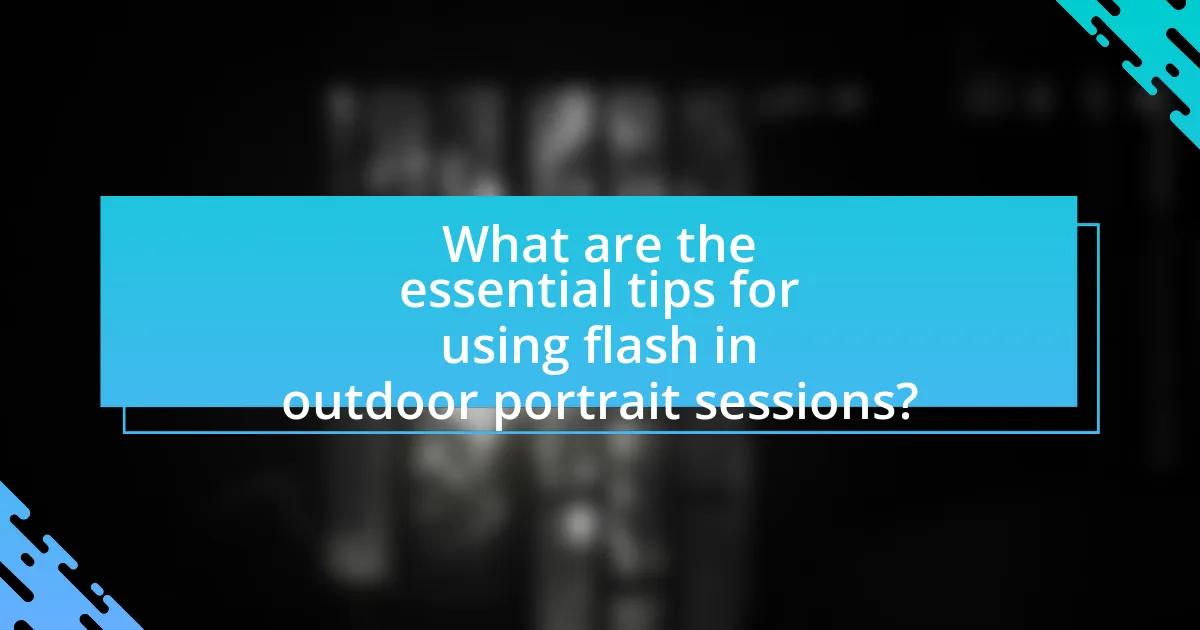
What are the essential tips for using flash in outdoor portrait sessions?
To effectively use flash in outdoor portrait sessions, position the flash off-camera to create more dynamic lighting and reduce harsh shadows. This technique enhances the subject’s features and adds depth to the image. Additionally, utilize a diffuser to soften the light, which helps in achieving a more flattering look. According to photography experts, using a flash in daylight can help fill in shadows on the subject’s face, especially when the sun is overhead, ensuring even lighting. Adjusting the flash power to balance with ambient light is crucial; typically, a lower power setting is effective to avoid overexposure. These practices are supported by numerous photography guides that emphasize the importance of light quality and direction in portrait photography.
How does flash enhance outdoor portrait photography?
Flash enhances outdoor portrait photography by providing controlled lighting that balances exposure and highlights the subject against varying backgrounds. In outdoor settings, natural light can create harsh shadows or uneven illumination, which can detract from the subject’s appearance. By using flash, photographers can fill in shadows, reduce contrast, and ensure that the subject is well-lit, resulting in a more flattering and professional image. Studies show that using flash in bright sunlight can improve the overall quality of portraits by creating a more even light distribution, thus enhancing details and colors in the subject’s features.
What are the advantages of using flash in bright sunlight?
Using flash in bright sunlight enhances image quality by providing controlled lighting, reducing harsh shadows, and improving subject visibility. In bright conditions, sunlight can create unflattering shadows on the subject’s face, particularly under the eyes and chin. By using flash, photographers can fill in these shadows, resulting in a more balanced and flattering portrait. Additionally, flash can help to separate the subject from the background, creating a more three-dimensional effect and enhancing the overall composition. This technique is supported by the principle that fill flash compensates for the intensity of sunlight, ensuring that the subject is well-lit regardless of the ambient light conditions.
How does flash help in controlling shadows during outdoor shoots?
Flash helps in controlling shadows during outdoor shoots by providing additional light that can fill in dark areas created by harsh sunlight. When shooting outdoors, direct sunlight often casts strong shadows on subjects, particularly on the face. By using flash, photographers can illuminate these shadowed areas, resulting in a more balanced exposure. This technique is supported by the principle of fill flash, which effectively reduces contrast and enhances detail in shadowed regions, leading to a more flattering and evenly lit portrait.
What types of flash equipment are best for outdoor portraits?
The best types of flash equipment for outdoor portraits include speedlights, monolights, and portable flash units. Speedlights are compact and versatile, allowing photographers to easily adjust their settings for various lighting conditions. Monolights provide more power and are suitable for larger outdoor setups, offering consistent lighting and the ability to use modifiers like softboxes. Portable flash units, such as battery-powered strobes, offer flexibility and mobility, making them ideal for outdoor environments where access to power sources may be limited. These types of equipment are favored because they can effectively balance ambient light and provide the necessary illumination for high-quality portrait photography in outdoor settings.
What are the differences between on-camera and off-camera flash?
On-camera flash is mounted directly on the camera, providing light that is often harsh and flat, while off-camera flash is positioned away from the camera, allowing for more creative lighting angles and softer shadows. The positioning of off-camera flash enables photographers to control the direction and quality of light, resulting in more dynamic and visually appealing images. Studies in photography have shown that off-camera flash can significantly enhance the depth and dimension of portraits compared to the more uniform lighting produced by on-camera flash.
How do different flash modifiers affect outdoor portrait lighting?
Different flash modifiers significantly influence outdoor portrait lighting by altering the quality, direction, and intensity of the light produced. Softboxes, for example, diffuse the light, creating a softer and more flattering illumination that reduces harsh shadows on the subject’s face. In contrast, reflectors bounce light, enhancing highlights and adding dimension, which can make the portrait more dynamic. Additionally, umbrellas can either diffuse or reflect light, depending on their orientation, allowing for versatile lighting setups. Research indicates that using modifiers can improve the overall aesthetic of portraits by achieving a more balanced exposure and reducing the contrast between highlights and shadows, which is crucial in outdoor settings where natural light can be unpredictable.
What techniques should photographers use when incorporating flash outdoors?
Photographers should use techniques such as balancing ambient light with flash, using diffusers, and employing off-camera flash when incorporating flash outdoors. Balancing ambient light with flash involves adjusting the camera settings to ensure that both the natural light and flash contribute to the exposure, which can create a more natural look in portraits. Using diffusers softens the light from the flash, reducing harsh shadows and creating a more flattering illumination on the subject’s face. Off-camera flash allows for greater control over the direction and quality of light, enabling photographers to create dynamic lighting setups that enhance the overall composition. These techniques are widely recognized in photography as effective methods for achieving professional-quality outdoor portraits.
How can photographers balance ambient light with flash exposure?
Photographers can balance ambient light with flash exposure by adjusting the flash power and camera settings to achieve the desired exposure. This involves using a lower flash output to complement the existing ambient light, allowing for a natural blend between the two sources. For instance, setting the camera to a slower shutter speed can capture more ambient light while using a flash to illuminate the subject, ensuring that both elements are well-exposed. This technique is supported by the principle that the exposure triangle—aperture, shutter speed, and ISO—can be manipulated to harmonize flash and ambient light effectively.
What settings should be adjusted on the camera for optimal flash performance?
To achieve optimal flash performance, adjust the camera settings to include a lower ISO, a wider aperture, and a slower shutter speed. Lowering the ISO reduces sensitivity to light, which helps prevent overexposure when using flash. A wider aperture allows more light to enter the lens, enhancing the flash’s effectiveness in illuminating the subject. Additionally, using a slower shutter speed can help balance ambient light with the flash, creating a more natural look in outdoor portraits. These adjustments are supported by photography principles that emphasize the importance of exposure triangle settings in achieving well-lit images.
How can photographers troubleshoot common flash issues in outdoor settings?
Photographers can troubleshoot common flash issues in outdoor settings by adjusting the flash power, modifying the flash angle, and using appropriate diffusion techniques. For instance, if the flash is too strong, reducing the power can prevent overexposure, while angling the flash can help control shadows and highlights. Additionally, using a diffuser can soften the light, making it more flattering for portraits. These methods are effective because they directly address the challenges posed by varying outdoor lighting conditions, ensuring that the flash complements natural light rather than overpowering it.
What are the common problems faced when using flash outdoors?
Common problems faced when using flash outdoors include overexposure, harsh shadows, and difficulty in balancing ambient light with flash output. Overexposure occurs when the flash is too powerful for the available light, leading to washed-out images. Harsh shadows can result from the direct flash placement, creating unflattering contrasts on the subject’s face. Additionally, balancing ambient light with flash output can be challenging, especially in bright sunlight, making it difficult to achieve a natural look. These issues are frequently encountered by photographers during outdoor portrait sessions, necessitating careful adjustments to settings and techniques to mitigate their effects.
How can photographers effectively manage flash recycle times during a shoot?
Photographers can effectively manage flash recycle times during a shoot by using a combination of techniques such as adjusting the flash power, utilizing high-speed sync, and allowing for cooling periods. Reducing the flash power decreases the energy required for each shot, which can significantly shorten recycle times. High-speed sync allows photographers to shoot at faster shutter speeds, reducing the frequency of full-power flashes. Additionally, giving the flash unit time to cool down between bursts can prevent overheating, which can extend recycle times. These strategies are supported by the fact that many modern flash units have built-in thermal protection that activates when overheating occurs, thus emphasizing the importance of managing usage to maintain optimal performance.
What are the best practices for using flash in outdoor portrait sessions?
The best practices for using flash in outdoor portrait sessions include balancing ambient light with flash output, positioning the flash at an angle to avoid harsh shadows, and using modifiers to soften the light. Balancing ambient light ensures that the subject is well-lit without overpowering the natural light, which is crucial for achieving a natural look. Positioning the flash at an angle helps create dimension and reduces the risk of unflattering shadows on the subject’s face. Additionally, using modifiers like softboxes or umbrellas can diffuse the light, resulting in a more flattering and even illumination. These practices are supported by professional photography guidelines that emphasize the importance of light quality and direction in portraiture.
How can photographers create a natural look with flash in portraits?
Photographers can create a natural look with flash in portraits by using techniques such as diffusing the light, adjusting the flash power, and positioning the flash off-camera. Diffusing the light softens shadows and reduces harshness, which mimics natural light conditions. For instance, using a softbox or umbrella can help achieve this effect. Adjusting the flash power allows photographers to balance the flash with ambient light, ensuring that the subject is well-lit without overpowering the natural light. Positioning the flash off-camera creates more dynamic lighting and depth, similar to how sunlight would naturally fall on a subject. These methods collectively enhance the realism of the portrait while utilizing flash effectively.
What tips can help photographers achieve consistent results with flash outdoors?
To achieve consistent results with flash outdoors, photographers should use a combination of proper exposure settings, flash power adjustments, and diffusion techniques. Setting the camera to manual mode allows for precise control over shutter speed, aperture, and ISO, ensuring that ambient light and flash exposure are balanced. Adjusting the flash power according to the distance from the subject helps maintain consistent lighting, while using a diffuser softens the light, reducing harsh shadows and creating a more flattering appearance. Research indicates that using these techniques can significantly improve the quality of outdoor portraits, as evidenced by studies showing that well-diffused flash can enhance skin tones and reduce glare.

